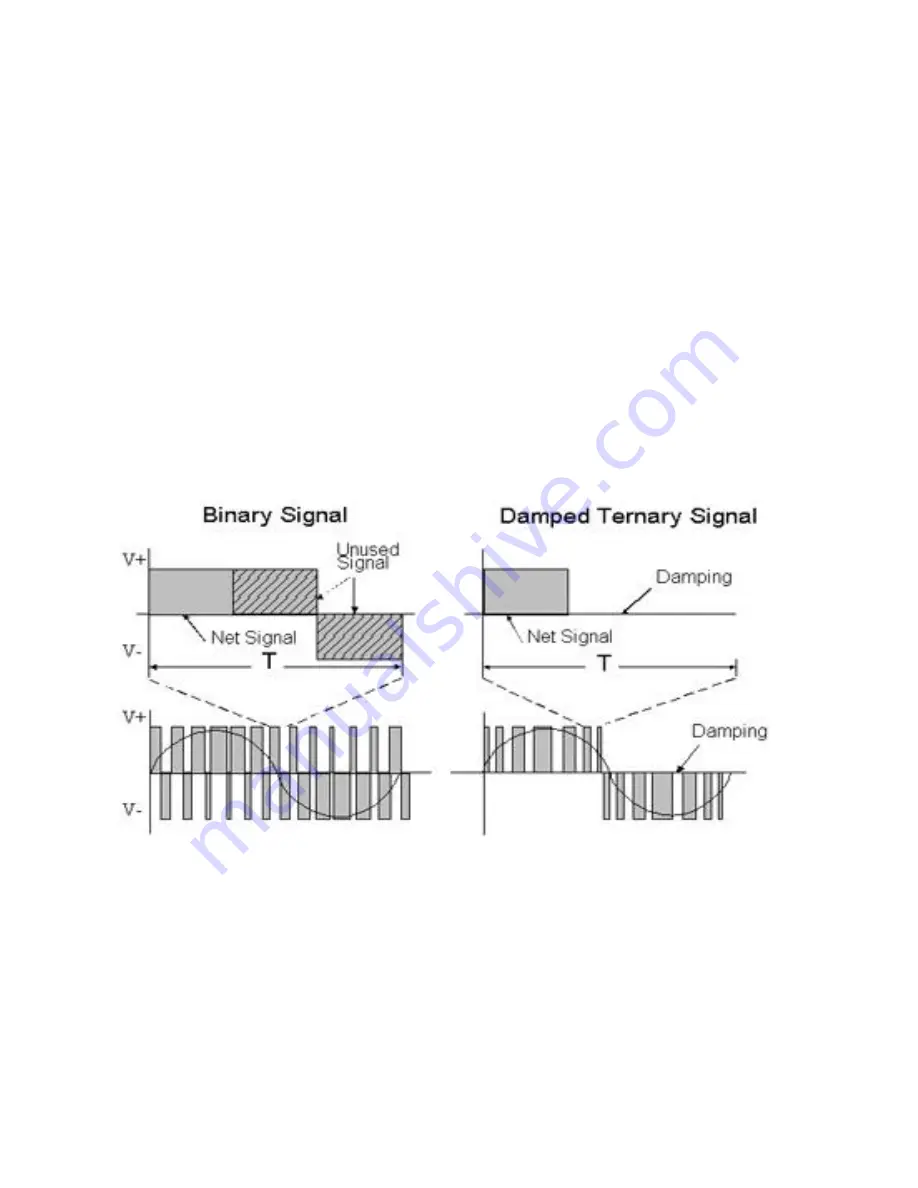
What is Damped Ternary Modulation?
Conventional Class D amplifiers utilize binary, or BI-state operation. Bi-
nary consists of only two switching states, positive power and negative
power. Ternary, or tri-state operation, consists of three switching states;
positive, negative and a zero power state. The third state is unique to this
design. During the time when neither supply connection is required, both
speaker terminals are connected to each other providing damping to the
loudspeaker, hence the name damped ternary. The figure below shows the
advantage of the damped ternary compared to binary modulation for a
sine wave. In binary the cancellation of two full level signals is required for
small outputs. Thus, the amplifier is continuously providing full output!
This represents wasted power. It also produces unwanted RF energy that
must be kept from radiating. In contrast, the damped ternary design only
supplies power to produce a signal.
Damped Ternary Advantage over Binary
In tests using the same hardware configured for ternary and then for bi-
nary, ternary's high frequency energy at zero output is attenuated over 20
dB below binary operating into the same filter! This means higher effi-
ciency and smaller filter components.
6


















